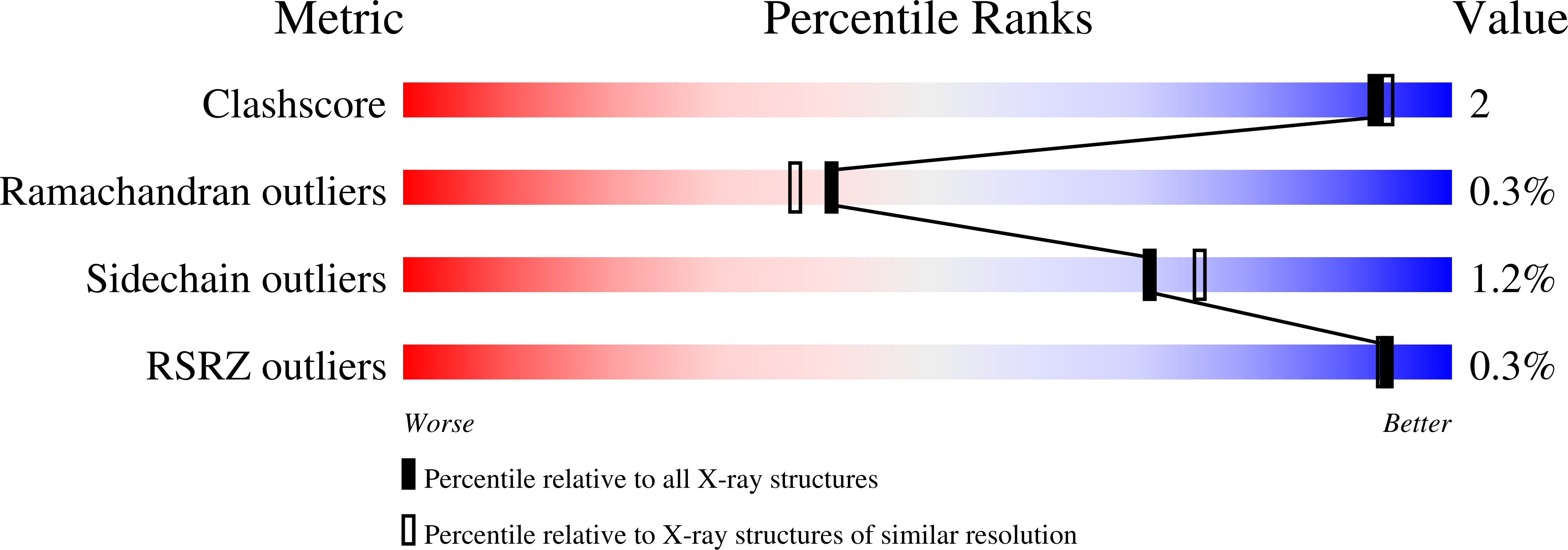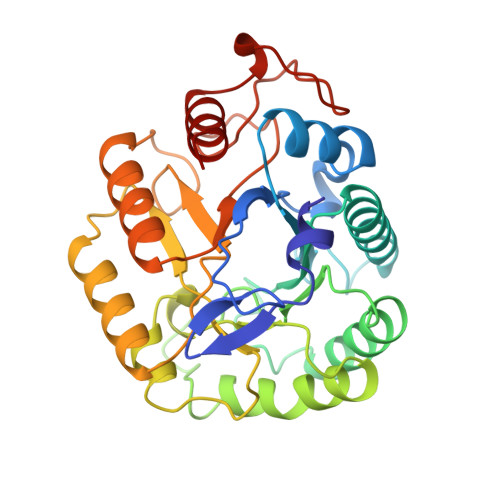Structure of the Bacillus agaradherans family 5 endoglucanase at 1.6 A and its cellobiose complex at 2.0 A resolution
Davies, G.J., Dauter, M., Brzozowski, A.M., Bjornvad, M.E., Andersen, K.V., Schulein, M.(1998) Biochemistry 37: 1926-1932
- PubMed: 9485319
- DOI: https://doi.org/10.1021/bi972162m
- Primary Citation of Related Structures:
1A3H, 2A3H - PubMed Abstract:
The enzymatic degradation of cellulose, by cellulases, is not only industrially important in the food, paper, and textile industries but also a potentially useful method for the environmentally friendly recycling of municipal waste. An understanding of the structural and mechanistic requirements for the hydrolysis of the beta-1,4 glycosidic bonds of cellulose is an essential prerequisite for beneficial engineering of cellulases for these processes. Cellulases have been classified into 13 of the 62 glycoside hydrolase families [Henrissat, B., and Bairoch, A. (1996) Biochem J. 316, 695-696]. The structure of the catalytic core of the family 5 endoglucanase, Ce15A, from the alkalophilic Bacillus agaradherans has been solved by multiple isomorphous replacement at 1.6 A resolution. Ce15A has the (alpha/beta)8 barrel structure and signature structural features typical of the grouping of glycoside hydrolase families known as clan GH-A, with the catalytic acid/base Glu 139 and nucleophile Glu 228 on barrel strands beta 4 and beta 7 as expected. In addition to the native enzyme, the 2.0 A resolution structure of the cellobiose-bound form of the enzyme has also been determined. Cellobiose binds preferentially in the -2 and -3 subsites of the enzyme. Kinetic studies on the isolated catalytic core domain of Ce15A, using a series of reduced cellodextrins as substrates, suggest approximately five to six binding sites, consistent with the shape and size of the cleft observed by crystallography.
Organizational Affiliation:
Department of Chemistry, University of York, Heslington, England. davies@yorvic.york.ac.uk
















